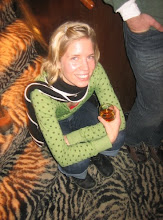 This past weekend was Valentine’s Day, and as commercial as it sometimes feels, it is a valiant holiday in that it reminds us all to take time out of our lives to be romantic and indulge in the love around us. Another beautiful aspect about this holiday is its focus on chocolate. Chocolate is known for containing phenylethylaming (PEA), the same chemical that is produced in your body when you are in love. Thus, it is no coincidence that V-day and chocolate go hand in hand.
This past weekend was Valentine’s Day, and as commercial as it sometimes feels, it is a valiant holiday in that it reminds us all to take time out of our lives to be romantic and indulge in the love around us. Another beautiful aspect about this holiday is its focus on chocolate. Chocolate is known for containing phenylethylaming (PEA), the same chemical that is produced in your body when you are in love. Thus, it is no coincidence that V-day and chocolate go hand in hand.In celebration of the day I took a trip to a small Chocolate Boutique located in Berkeley’s gourmet ghetto called Alegio Chocolate where I was introduced to a special chocolate- said to be the best in the world. The chocolate is made by Claudio Corallo on the Plantacao De Terriero Velho in a small African Island Country called Sao Tome e Principe. It is unique for many reasons. For one, Claudio Corallo spent his adult life searching for the perfect cocoa bean to use in his chocolate. Even before he found the bean he dedicated himself to producing the highest quality chocolate. Then, when he eventually did find the bean he was looking for, he continued to refine his production techniques, meticulously attending to every detail in the process from growing the plants, to harvesting the beans, to melting and storing the chocolate. Through his experience Claudio Corallo has developed unique methods of processing cocoa beans so as to create the richest and most flavorful chocolate he can muster.
















